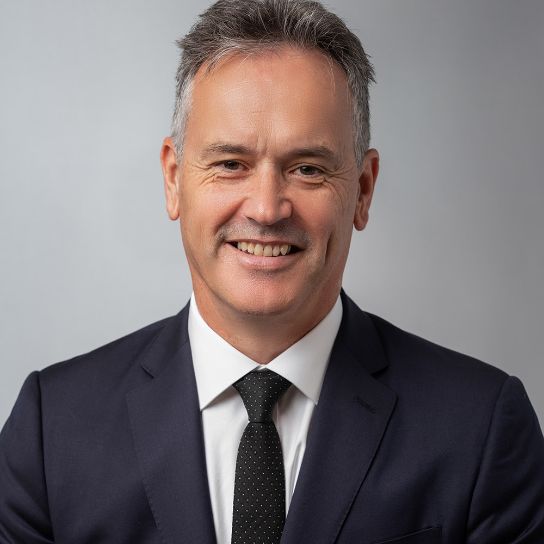Since the release of the Finkel Review last Friday, media attention has largely been focused on the recommended Clean Energy Target and what it means for reducing carbon emissions, ‘clean coal’ and electricity prices. But a significant focus of the Finkel Review is on ensuring the security and reliability of Australia’s electricity system. The Finkel Review’s recommendations in this area (if implemented) have the potential to materially change the operation of the electricity system and the development of renewable energy projects in Australia.
For a concise summary of the proposed Clean Energy Target and its implications, refer to our previous article1.
What do we mean by power system security and reliability?
The Finkel Review defines power system security as the system’s ability to respond to disturbances. Traditional large base load generators are not only stable and predictable in terms of their output, but their physical characteristics mean that they naturally assist in keeping the system in balance when sudden changes occur elsewhere (for example, where a power line goes down, a power station trips off or a large load starts up). By contrast, variable renewable energy (VRE) generation is inherently less stable (for example, solar PV is subject to cloud flicker) and generally cannot provide support to the electricity system in response to changes, although it can be designed to do so.
System reliability, according to Finkel, is the system’s ability to ensure generation and transmission capacity is available to meet customer demand. Base load thermal and controllable hydro generation, for example the Snowy scheme, play an important role in system reliability as their “fuel source” is generally within the generator’s control (noting that the Finkel Review does call out for special mention the current risk of shortfalls in gas supply).
In response to the increasing proportion of VRE generation in the power system, Finkel recommends steps to ensure that system security and reliability can be maintained at a level that meets the public’s expectations.
Renewable developers to build dispatchable power?
One of the most striking recommendations in the Finkel Review is the Generator Reliability Obligation which provides that if a new VRE generator wishes to connect in a region that is close to the limit of minimum dispatchable capacity (as determined by a ‘market body’), that new VRE generator must also provide an amount of new dispatchable generation capacity. That dispatchable generation capacity cannot come from existing sources. It is not clear at this time what date will be relevant for determining what is existing and what is “new” VRE generation.
Depending on the detailed policy settings adopted, the Generator Reliability Obligation has the potential to impose major costs and complications on VRE generators connecting to areas of the National Electricity Market (NEM) with a high concentration of VRE generation. VRE generators would need to incorporate battery or other dispatchable technology into their facilities or procure the construction of back-up generation (presumably fuelled by natural gas or diesel).
Tighter controls through renewable connection standards
The Finkel Review also calls for an overhaul of the ‘connection standards’ (i.e. Generator Performance Standards) imposed on VRE generators under the National Electricity Rules. These connection standards effectively regulate each generator’s required contribution to system stability.
Since the outages in the South Australian power system in 2016/2017, renewable generators have already seen changes in the application of these connection standards, and the South Australian government has taken steps to impose its own standards via the State’s generator licensing regime (a move supported by the Finkel Review).
Changing connection standards also have the potential to materially impact developers’ costs, for example, through a requirement for upgraded connection and control equipment onsite.
Transmission companies to build inertia / procure battery support
Synchronous generators such as large thermal and controllable hydro generators have traditionally helped support system security through providing ‘system inertia’. This inertia is inherent in their large spinning mass which allows these generator to help dampen frequency changes and control voltage.
In response to the reduced proportion of synchronous generation in the system, the Finkel Review recommends that transmission network service providers (TNSPs) should take on responsibility for maintaining a minimum level of system inertia (determined by AEMO for individual regions and sub-regions) in their networks.
This recommendation was floated by the AEMC in its System Security Market Frameworks Review and would see TNSPs constructing or contracting for the provision of equipment that can maintain inertia in the system, similar to the existing contracting of voltage and other network support services. Where sufficient inertia is not available, TNSPs would contract with providers of fast frequency response (FFR) services. Key potential providers of FFR services include utility scale battery storage facilities (or potentially hydro or thermal plant depending on how the requirement is defined). The AEMC’s proposals to introduce a market for FFR services and require new VRE generators to provide FFR services were also conditionally supported in the Finkel Review.
Several TNSPs have already experimented with grid scale batteries, for use in helping with stability, noting that they can also play a role in trading power. They are reasonably costly solutions which may not meet the efficient expenditure test as presently constructed (specific arrangements have been agreed by AER thus far), so changes may be necessary to enable TNSPs to recover the cost of providing these services. In addition, there is a question of how the arbitrage capabilities of these facilities would be handled and whether TNSPs would trade capacity or instead contract trading activities to retailers.
Integrated grid plans to support renewables
It has been a perennial issue for developers of generation facilities, including renewables, that the NEM transmission networks are built to support legacy generation and load and not to facilitate dispatch of proposed new generation facilities. It is generally up to individual generators to fund any network extensions and augmentations required to accommodate connection and dispatch of any new generator. The need for generators to fund network expansions to support their project (and the free-rider problem) has previously driven consideration of regulatory changes such as the Scale Efficient Network Extension rule change (which was implemented, albeit in a watered-down form to that originally proposed) and the Optional Firm Access regime (which was not implemented).
The Finkel Review proposes that an integrated grid plan should be developed (potentially by AEMO) to support ‘renewable energy zones’ on a NEM-wide basis. Finkel also contemplates the potential for government funding to assist in the establishment of transmission infrastructure of the scale required for the development of such zones, in advance of individual generators applying to connect. TNSPs will want to be assured of recovery of any investments they are required to make.
A ‘day ahead’ market?
The Finkel Review recommends that market bodies consider introducing a day ahead (ex ante) bidding market to the NEM. A day ahead market would supplement the existing “real-time” NEM spot market and involve participants financially committing to supply power the day before it is required. There would then be a separate financial settlement based on actual dispatch on the day, which would then operate as a balancing market. While NEM pre-dispatch processes already provide for submission of availability information in the lead up to the trading day, generators are permitted to re-bid right up until the relevant dispatch interval.
The day ahead market arrangement is said to improve system reliability by reducing the potential for strategic capacity withholding or disorderly bids. It is also said to better facilitate demand-side participation compared to real-time markets.
A move to a day ahead market would have a major impact on the operations of the NEM, all market participants and the contract markets that surround it. The Finkel Review recognises this, and notes that this particular reform is lower priority and requires a more detailed cost-benefit analysis.
Three year closure notices
In an effort to further manage system security and reliability Finkel also recommends that all ‘existing large generators’ be required to provide a ‘binding’ three year notice prior to closure. The intention of such a policy is clearly to provide investment certainty for new entrants and to provide the best opportunity for replacement generation to be installed.
This requirement is no doubt driven by the recent closure of large generators such as Hazelwood power station and echoes the ‘Contracts for Closure’ process contemplated by the Commonwealth Government at the time the carbon price mechanism was introduced.
The difficulty with such a scheme seems to be in its administration and enforcement. It is not clear, for example, what penalty would be applied should a generator close without giving three years’ notice. It is also not clear what would occur if a generator were not to close, having given notice. If there were sanctions for this, some generators may give notice because of general nervousness about the market but find that the plant is still operating profitably when the notice expires, such that it does not need to close.
Cyber Security
The Finkel Review also acknowledges the risk posed to the electricity system by cyber attacks flags the need for industry-specific controls. The position taken in the Finkel Review is consistent with an increase in regulatory focus in this area evidenced by the establishment of the Critical Infrastructure Centre, changes in foreign investment approval conditions for key pieces of infrastructure and the Critical Infrastructure Conditions introduced in electricity network licences in NSW. While many of these mechanisms have been driven by foreign ownership concerns, the emphasis in the Finkel Review is on securing electricity delivery as an essential service irrespective of asset ownership. In particular, the Finkel Review acknowledges the central role of AEMO’s systems in the management of the electricity system and the importance of undertaking third party testing and assessment of their security.
The new measures proposed in the Finkel Review include annual reporting by all industry participants, routine testing and employee training. The first report, drawing together information and reporting from all participants, is proposed to be delivered by the end of 2018. These cyber security requirements would be administered by an Energy Security Board in consultation with the Australian Cyber Security Centre and the Commonwealth Department of Energy.
Final comments
The recommendations of the Finkel Review relating to reliability and security of the electricity system present a range of risks and opportunities for participants in the electricity industry.
On the whole, the recommendations are high level and conceptual in nature. This means their impact (if they are implemented) will be largely dictated by the detailed policy decisions made by Government and regulators. Any changes in this area are likely to require amendments to the National Electricity Rules.
The nature of the underlying regulatory arrangements that would need to change in order to implement the Finkel Review security and reliability recommendations are such that the support of COAG, and not just the Commonwealth government, will be required. Given the difficulty of achieving an alignment of political views on energy policy in Australia, this may pose the greatest challenge to implementation.
Endnotes
Legal Notice
The contents of this publication are for reference purposes only and may not be current as at the date of accessing this publication. They do not constitute legal advice and should not be relied upon as such. Specific legal advice about your specific circumstances should always be sought separately before taking any action based on this publication.
© Herbert Smith Freehills 2024


